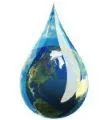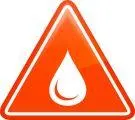
Amazing Water Facts
Fact 1:

Water Makes Up 70% of the Human Body
"Your body needs clean, healthy water for optimal function. Dehydration and impurities in water can affect your health."

The Human Body is 60% Water
"Hydration is key to survival. But did you know that the quality of water you drink can affect your overall health?"
Fact 2:

97% of Earth’s Water is Saltwater (Undrinkable)
"Only 3% of the Earth's water is freshwater, and just a fraction of that is drinkable. Clean water is a limited, precious resource we must protect."
Fact 3:

1 in 9 People Lack Access to Safe Drinking Water
"Contaminated water is a global crisis. Even in developed countries, tap water may contain harmful contaminants like lead, chlorine, and pesticides."

Contaminated Water is a Global Issue
"Billions of people lack access to safe drinking water. Contaminants like lead, arsenic, and bacteria are found in everyday tap water."
Fact 4:

Water Pollution Affects Everyone
"Industrial waste, agricultural runoff, and plastic waste contribute to water pollution, affecting ecosystems and drinking water sources."
Fact 5:

RO Systems Remove 99% of Contaminants
"Reverse Osmosis technology removes harmful substances, including heavy metals, bacteria, and chemicals, delivering clean, pure water."

Tap Water Isn’t as Safe as You Think
"Water sources are vulnerable to pollution. RO systems can filter out up to 99% of contaminants, including microplastics, chlorine, and heavy metals."

RO Systems Protect Your Appliances
"Filtered water extends the life of home appliances by preventing buildup of minerals and scale in pipes, boilers, and dishwashers."
Fact :

RO Systems Save You Money
"By investing in an RO system, you reduce your dependency on bottled water and help protect the environment."

Bottled Water Costs 2,000x More Than Tap Water
"Stop wasting money on bottled water. An RO system saves you money in the long run while providing you with safer, cleaner water."
1. Covers Most of Earth
About 71% of the Earth's surface is covered with water. However, only about 2.5% of it is freshwater, which is essential for human consumption, agriculture, and many ecosystems.
2. Human Body Composition
The human body is made up of about 60% water. Our brains and hearts are composed of about 73% water, and even our bones are about 31% water.
3. Oceans Hold the Majority
97% of Earth's water is in the oceans, meaning it's saline. Only a small fraction is freshwater, and even less is accessible for use (most is locked in ice caps and glaciers).
4. Old Water
Some water on Earth is over 4 billion years old—older than the solar system itself. The water we drink today has cycled through the Earth's atmosphere, oceans, and land for millennia.
5. Water as a Universal Solvent
Water is known as the "universal solvent" because it can dissolve more substances than any other liquid. This property makes it crucial for carrying nutrients and waste in biological systems.
6. Water in Space
There are massive amounts of water in space! Ice has been discovered on the moon, on Mars, and even in the form of ice clouds in deep space. Scientists believe there's water on Europa, a moon of Jupiter, and under its icy crust could be an ocean larger than Earth’s.
7. Frozen Freshwater
Around 68% of the Earth's freshwater is trapped in ice and glaciers, primarily in Antarctica and Greenland.
8. Water in the Atmosphere
There is more water in the Earth’s atmosphere than in all of the rivers on the planet combined.
9. Water's Boiling and Freezing Points
Water has some unique properties: it boils at 100°C (212°F) and freezes at 0°C (32°F) at sea level, but both points can change depending on altitude and atmospheric pressure.
10. Takes a Lot of Water to Make Everyday Products
It takes about 1,800 gallons of water to produce one pound of beef. Similarly, producing one pair of jeans requires about 1,800 gallons of water due to the agricultural water needs of cotton plants.
11. Water’s Role in Regulating Earth's Climate
Oceans act as a global thermostat. Water absorbs and stores heat, distributing it around the globe and playing a critical role in regulating Earth's climate systems.
12. Animals and Plants Depend on Water
Many species are made up of a high percentage of water. For example, jellyfish are about 95% water, and cucumbers are about 96% water.
12. Animals and Plants Depend on Water
Many species are made up of a high percentage of water. For example, jellyfish are about 95% water, and cucumbers are about 96% water.
13. Water Footprint
The average person in the U.S. uses about 80-100 gallons of water per day. Showers, toilets, and household cleaning contribute heavily to this.
14. The Water Cycle Never Stops
Water is continuously moving through a cycle of evaporation, condensation, and precipitation. This process helps maintain life on Earth.
Water is fascinating and essential to life as we know it!
Water is one of the Earth's most precious and vital resources. It is essential for life, ecosystems, agriculture, industry, and human survival. Some key reasons why water is considered precious include:
1. Essential for Life
Water is crucial for the survival of all living organisms, including humans, animals, and plants. It is involved in vital biological processes like hydration, digestion, and cellular function.
2. Limited Availability
Only about 2.5% of Earth's water is freshwater, and a large portion of it is locked in glaciers, ice caps, and deep underground. This makes the accessible freshwater supply limited and vulnerable to overuse and contamination.
3. Human Consumption
Drinking water is a basic human need, and clean, potable water is crucial for health and sanitation. In many parts of the world, access to safe drinking water remains a challenge.
4. Agricultural Needs
Agriculture is the largest consumer of water globally, using around 70% of the available freshwater supply. Crops and livestock depend on water for growth and production.
5. Industrial Use
Water is also used extensively in industries such as manufacturing, energy production, and mining. It is used for cooling systems, processing materials, and as an input in production processes..
6. Ecosystems and Biodiversity
Rivers, lakes, wetlands, and oceans provide habitats for countless species. Healthy water ecosystems are vital for maintaining biodiversity and regulating natural cycles like the water cycle and carbon cycle.
7. Climate Regulation
Water bodies like oceans and seas play a key role in regulating Earth's climate. They absorb heat, distribute it through currents, and influence weather patterns globally.
8. Energy Production
Hydropower is a significant renewable energy source that depends on water to generate electricity. Water is also used in cooling systems for thermoelectric power plants.
9. Drought and Water Scarcity
Water scarcity is a growing concern, particularly in arid and semi-arid regions. Climate change is intensifying the frequency of droughts, which can have devastating effects on agriculture, livelihoods, and food security.
10. Water Pollution
Water resources are increasingly threatened by pollution from industrial waste, agricultural runoff, plastic debris, and untreated sewage. Contaminated water poses health risks to humans and ecosystems alike.
Importance of Conservation
Given its essential role, conserving and managing water resources sustainably is critical. Efforts include promoting water-saving technologies, improving irrigation methods, reducing pollution, and restoring wetlands and ecosystems.
Effective water management is essential for securing this precious resource for future generations.
RDC SALES

Got Questions? Call us 24/7
+91 11 4132 5831
Quick Links
More Links
Copyright @ RDC SALES - All Rights Reserved.
